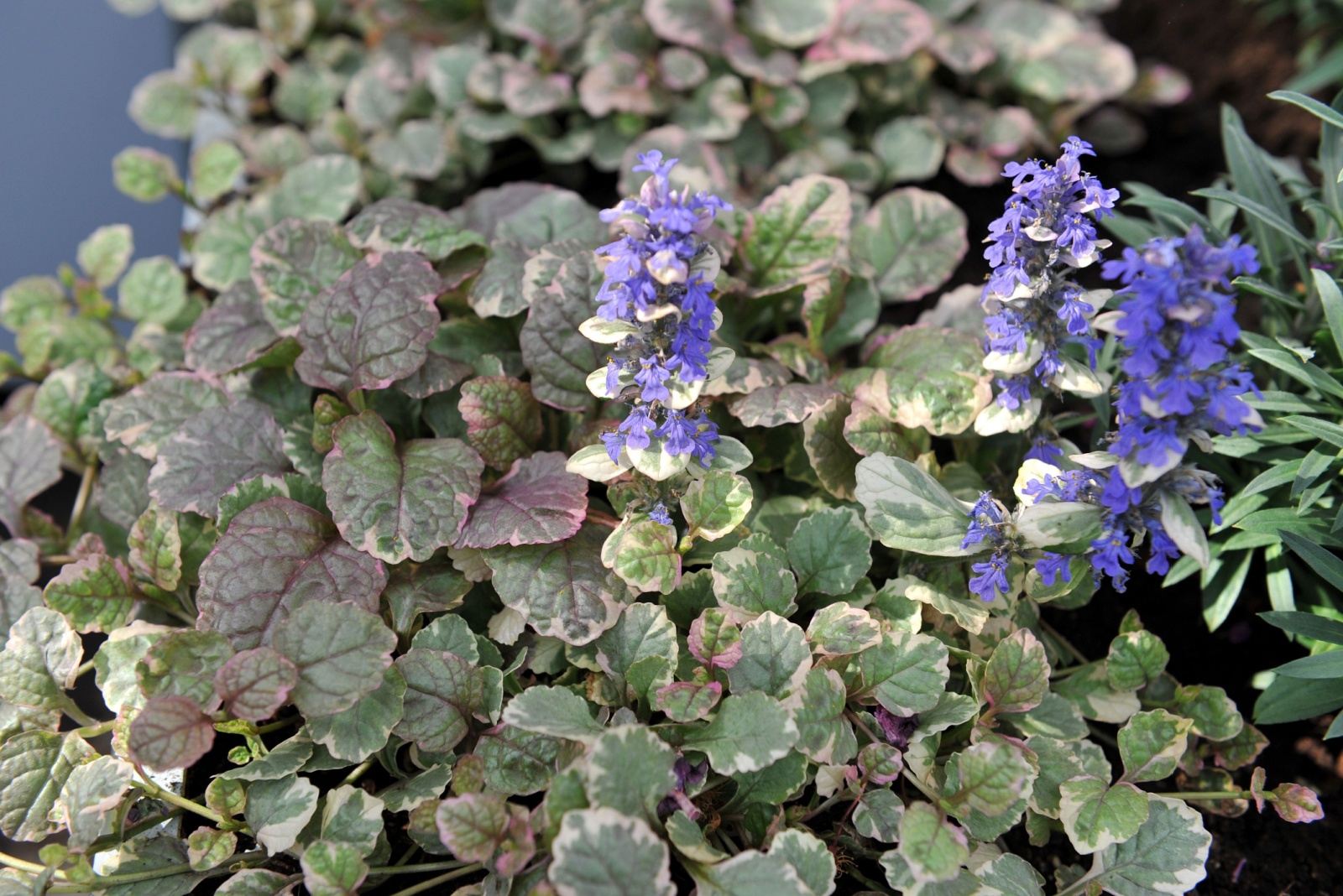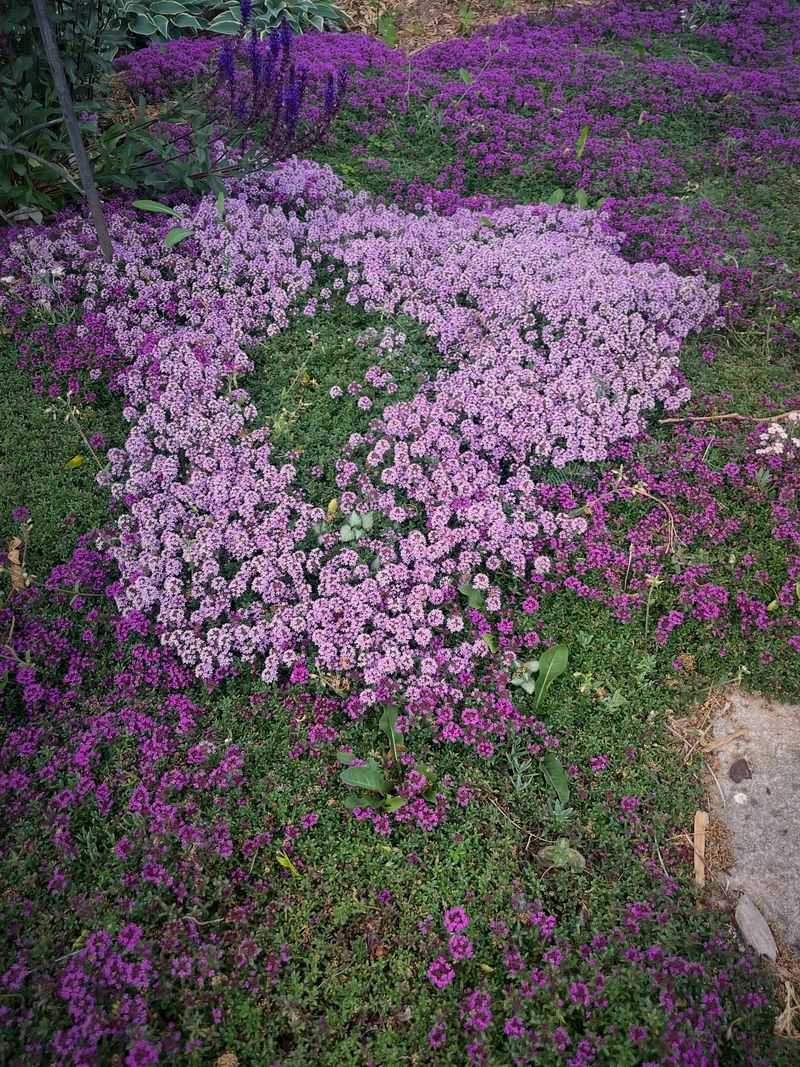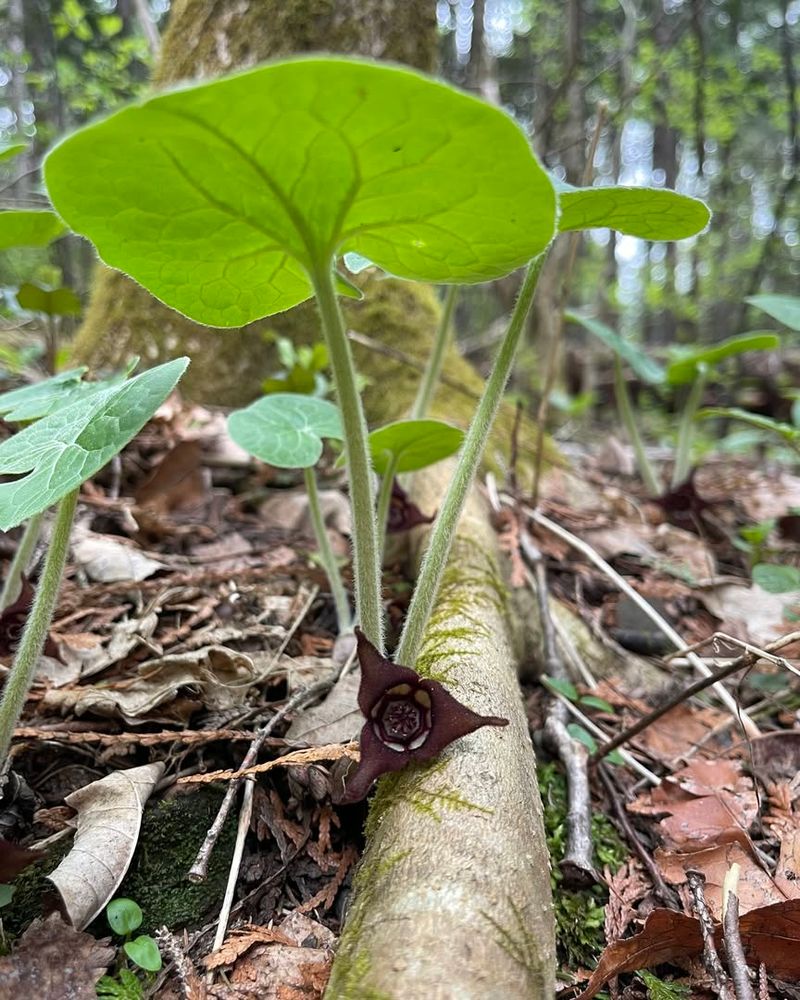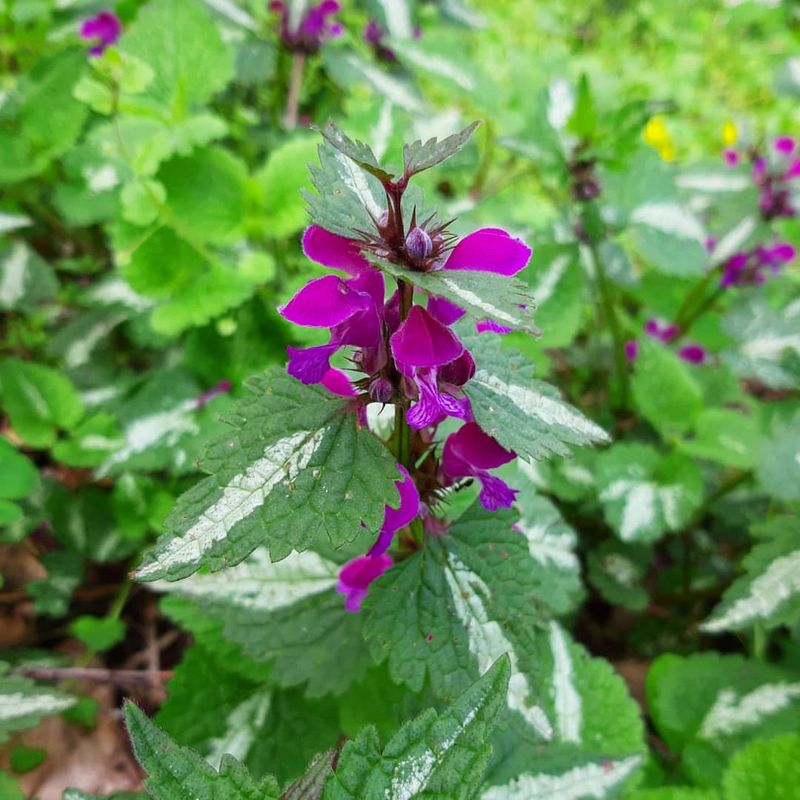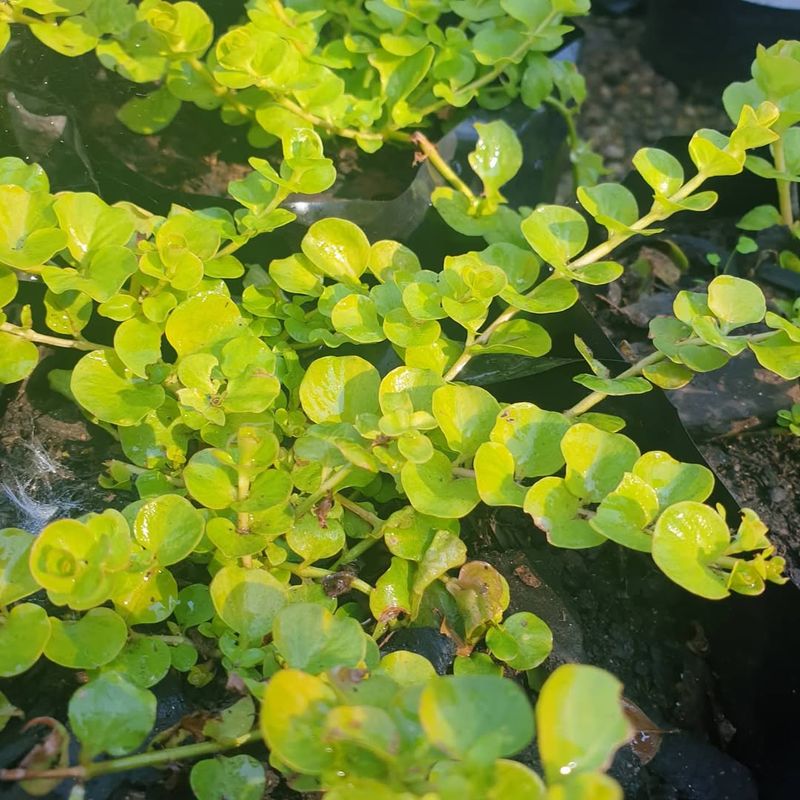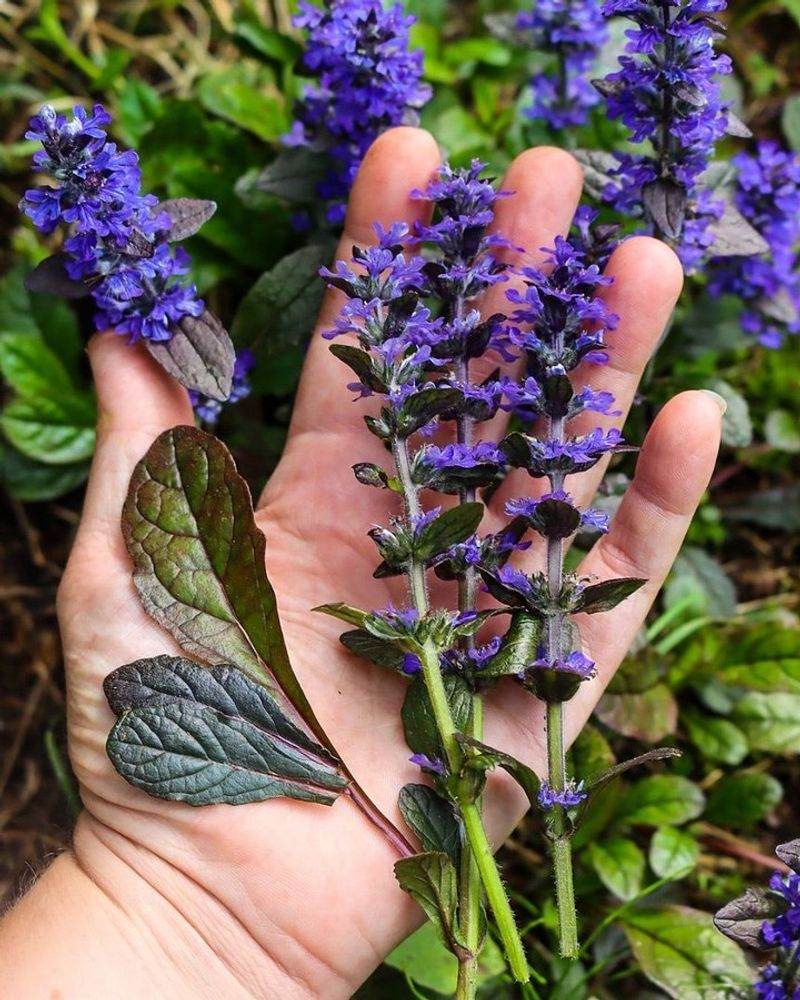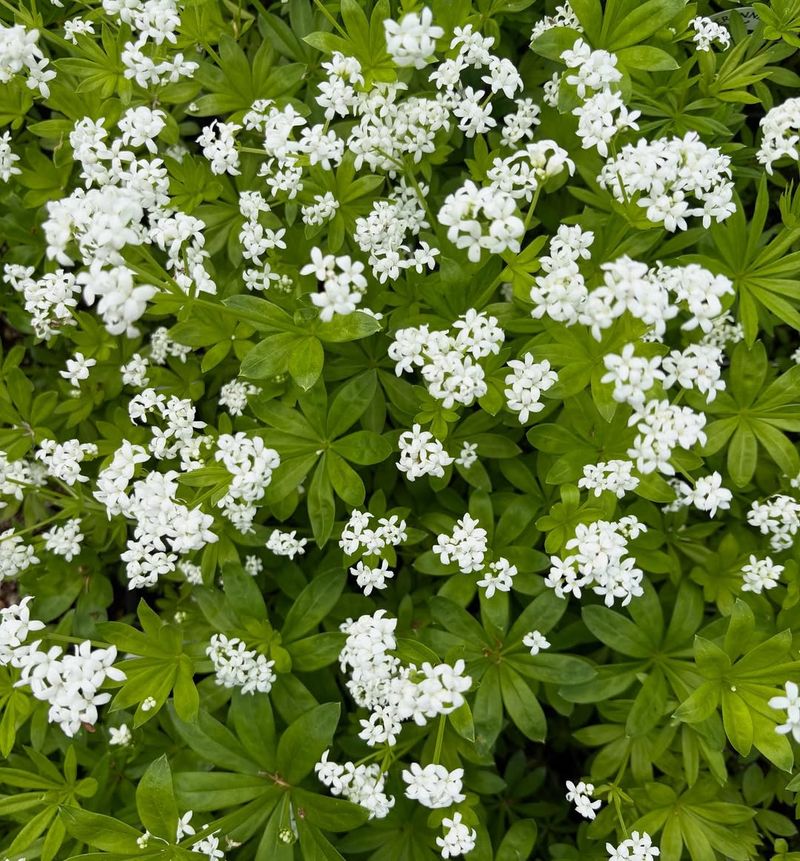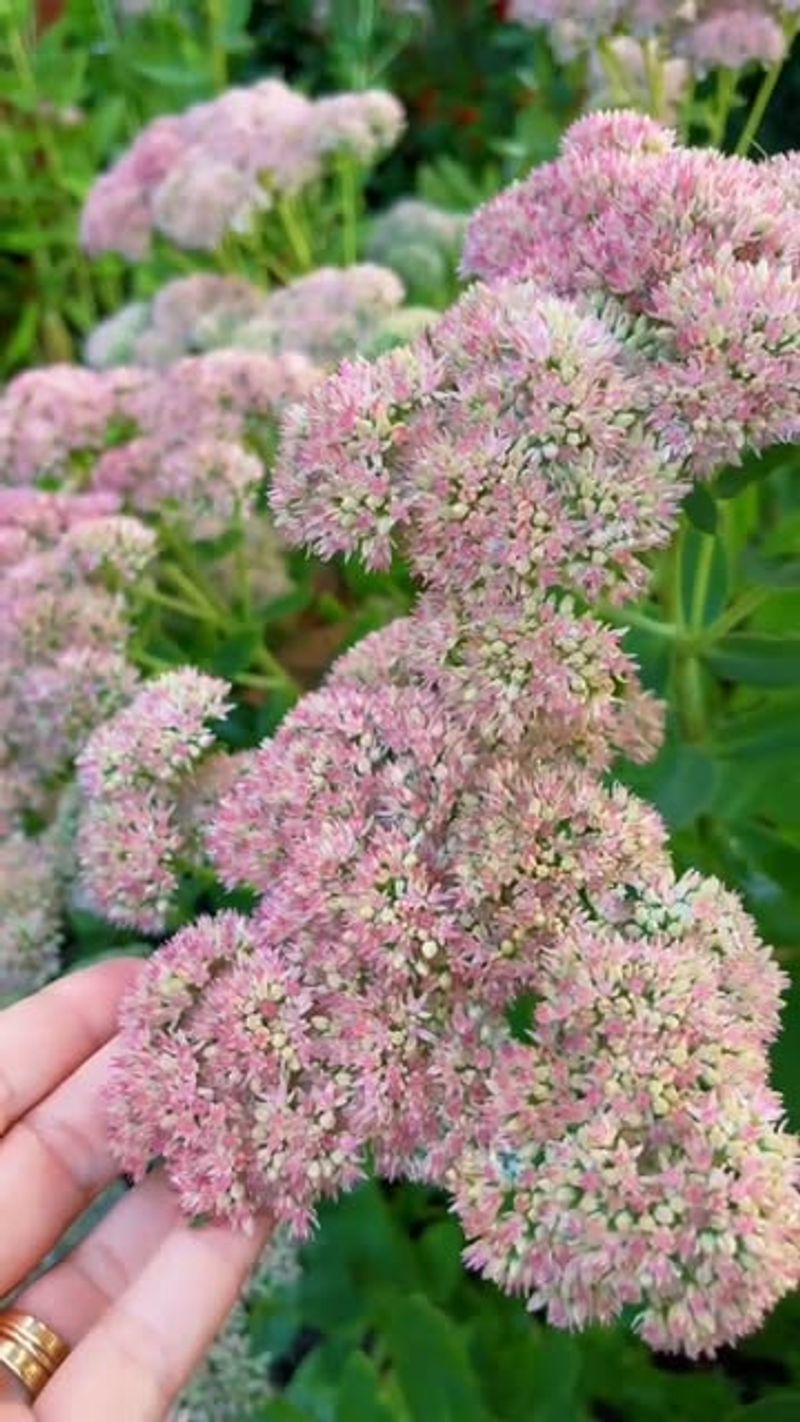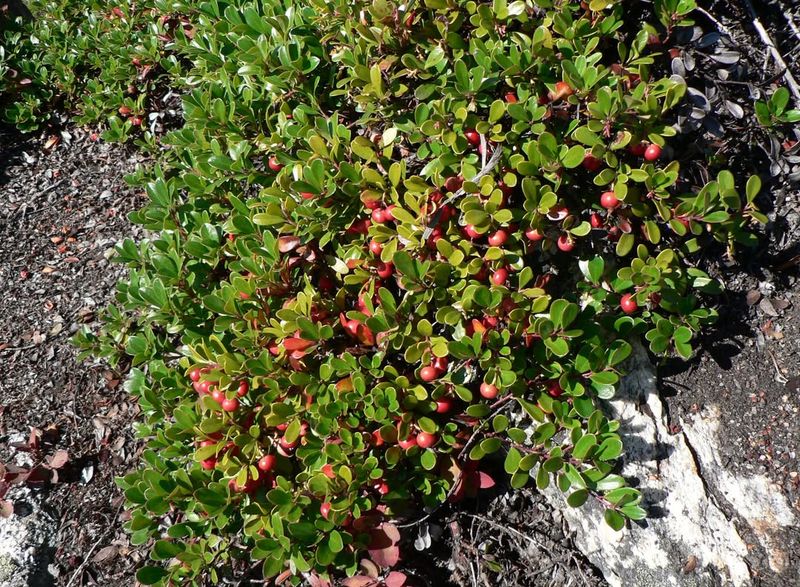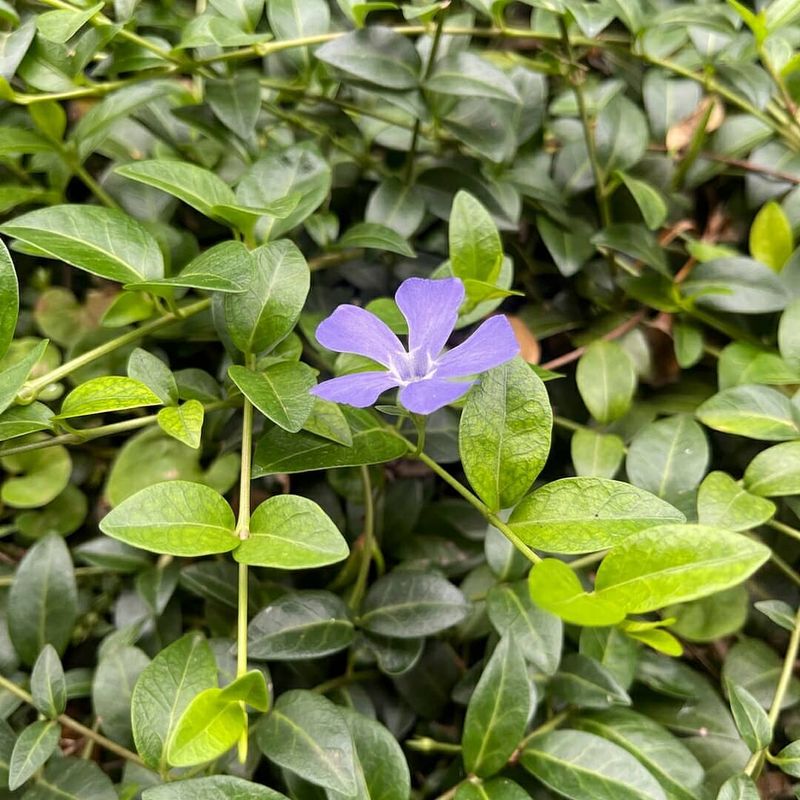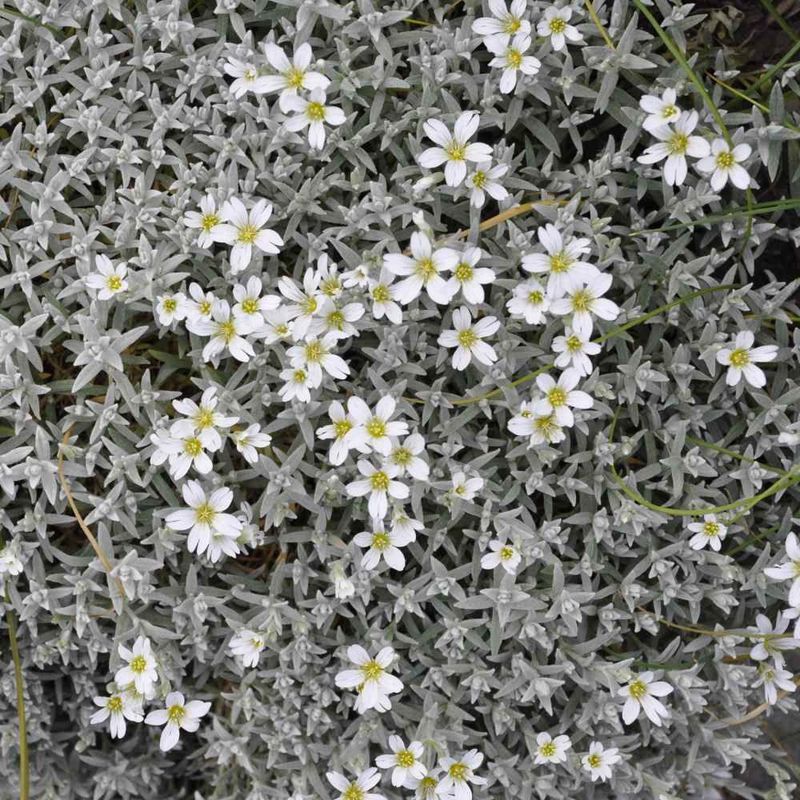Bare patches in your Minnesota garden can be frustrating, especially when weeds seem to take over faster than anything else. Ground covers offer a smart solution by spreading quickly to fill empty spaces while adding beauty and preventing soil erosion.
Whether you’re dealing with shady corners or sunny slopes, the right ground cover can transform problem areas into lush, low-maintenance spaces you’ll love.
1. Creeping Thyme
Walk across this fragrant carpet and you’ll release a delightful herbal scent that makes every garden stroll memorable. Creeping thyme forms a dense, low mat that tolerates foot traffic better than most ground covers, making it perfect for filling gaps between pavers or stones.
Tiny purple or pink flowers appear in summer, attracting bees and butterflies to your yard. Minnesota’s cold winters don’t bother this tough plant one bit, and it thrives in full sun with well-drained soil. Once established, it needs minimal watering and rarely requires fertilizer or special care.
2. Wild Ginger
Shade gardeners rejoice when they discover this native Minnesota treasure that spreads steadily without becoming aggressive. Heart-shaped leaves overlap to create a lush, tropical-looking carpet under trees where grass struggles to grow.
Hidden beneath the foliage, curious maroon flowers bloom close to the ground in spring, though the real star is the attractive leaf coverage. Wild ginger prefers moist, rich soil and will fill shady spots faster than you might expect. The roots smell faintly of ginger when crushed, giving this plant its memorable common name.
3. Spotted Dead Nettle
Don’t let the odd name fool you—this ground cover brings serious visual interest with silvery-white markings splashed across each leaf. Purple, pink, or white flowers pop up throughout the growing season, adding color to shady areas where blooms are hard to find.
Spotted dead nettle spreads quickly through runners, filling bare spots in weeks rather than months. Minnesota gardeners appreciate its tolerance for both shade and partial sun, plus its ability to handle dry conditions once established. Trim it back if it gets too enthusiastic about spreading.
4. Creeping Jenny
Bright chartreuse leaves create a glowing effect that lights up dark corners and contrasts beautifully with darker plants nearby. Creeping Jenny earns its name by trailing and spreading rapidly across bare soil, rocks, or even spilling over container edges.
Yellow cup-shaped flowers appear in early summer as a cheerful bonus. This vigorous grower fills spaces fast, sometimes too fast, so plant it where you can control its spread or where aggressive coverage is exactly what you need. Moist soil keeps it happiest, making it ideal near ponds or rain gardens.
5. Ajuga (Bugleweed)
Glossy, colorful foliage in shades of purple, bronze, or green makes ajuga a year-round standout in Minnesota landscapes. Spikes of blue, purple, or white flowers shoot up in late spring, creating a stunning display that lasts for weeks.
Rapid spreading through runners means bare spots disappear quickly, often within a single growing season. Ajuga handles shade beautifully but also tolerates some sun, giving you flexibility in placement. Deer typically leave it alone, which is a welcome bonus for many Minnesota gardeners dealing with browsing wildlife.
6. Sweet Woodruff
Delicate white star-shaped flowers float above whorls of bright green leaves each spring, creating an enchanting woodland scene. Sweet woodruff spreads steadily through underground rhizomes, forming a dense mat that crowds out weeds in shady areas.
When dried, the leaves release a pleasant vanilla-like scent that made this plant popular in traditional May wine recipes. Minnesota’s shade gardens benefit from its reliable coverage under trees and shrubs. Moist, rich soil helps it establish quickly, though it tolerates drier conditions once its roots are deep.
7. Sedum (Stonecrop)
Succulent leaves store water, making sedum incredibly drought-tolerant once it settles into your garden beds. Low-growing varieties spread quickly across sunny, well-drained areas, creating colorful mats of green, gold, or reddish foliage. Star-shaped flowers in yellow, pink, or white attract pollinators during summer months.
Rocky slopes, sandy soil, or areas where nothing else seems to grow become perfect homes for these tough plants. Minnesota’s temperature swings don’t faze sedum at all—it simply bounces back each spring, ready to fill more space with minimal fuss.
8. Bearberry (Kinnikinnick)
Native to Minnesota’s northern regions, bearberry offers evergreen coverage that looks good even under snow. Small, glossy leaves turn bronze or reddish in fall, adding seasonal interest before winter arrives. Tiny pink or white bell-shaped flowers in spring develop into bright red berries that birds enjoy throughout winter.
Spreading slowly but steadily, bearberry works well on slopes where erosion is a concern. Sandy, acidic soil suits it best, making it ideal for difficult sites where other plants struggle. Once established, it requires almost no maintenance or watering.
9. Creeping Phlox
Imagine a waterfall of pink, purple, white, or blue flowers spilling across your garden each spring—that’s creeping phlox at its finest. Dense mats of needle-like evergreen foliage stay attractive year-round, but the real show happens when blooms cover every inch in April and May.
Sunny locations with good drainage help this spreader fill bare spots quickly. Rock gardens, slopes, or border edges become spectacular when creeping phlox takes hold. Minnesota gardeners love its cold hardiness and the way it attracts early-season butterflies and hummingbirds.
10. Vinca Minor (Periwinkle)
Glossy evergreen leaves create a sophisticated look that stays attractive through all four Minnesota seasons. Periwinkle blue flowers (though white varieties exist too) appear in spring and sometimes rebloom sporadically through summer.
Trailing stems root wherever they touch soil, allowing vinca to spread quickly and cover large areas with minimal effort. Shade or partial sun works equally well, making it versatile for various garden situations.
Watch its spread in natural areas since it can become aggressive, but in controlled garden beds, it’s a reliable problem-solver for difficult bare spots.
11. Snow-In-Summer
Silver-gray foliage catches sunlight beautifully, creating a shimmering effect even before the flowers appear. When white blooms blanket the plant in late spring, it truly looks like a fresh snowfall covering your garden.
Hot, dry, sunny spots where other plants wilt become prime real estate for snow-in-summer. Fast spreading makes it excellent for filling large bare areas quickly, though you’ll want to contain it in smaller spaces.
Minnesota’s cold winters and occasional drought conditions don’t slow this tough customer down one bit, and it requires virtually no care once established.

